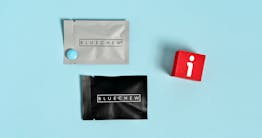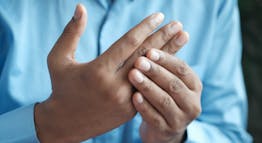|
The Femur BoneExplore Innerbody's 3D anatomical model of the femur bone, the strongest bone in the entire human body. by Tim Taylor Written by Tim Taylor Anatomy & Physiology Senior Writer Tim Taylor is a senior writer at Innerbody Research focusing on human anatomy and physiology. Tim earned both his Bachelor of Science degree in Biology and his Master's degree in Teaching from the University of Pittsburgh. Read more Last updated: Jul 25th, 2025
Click to View Larger Image The femur, or thigh bone, is the longest, heaviest, and strongest bone in the entire human body. All of the body's weight is supported by the femurs during many activities, such as running, jumping, walking, and standing. Extreme forces also act upon the femur thanks to the strength of the muscles of the hip and thigh that act on the femur to move the leg. The femur is classified structurally as a long bone and is a major component of the appendicular skeleton. On its proximal end, the femur forms a smooth, spherical process known as the head of the femur. The head of the femur forms the ball-and-socket hip joint with the cup-shaped acetabulum of the coxal (hip) bone. The rounded shape of the head allows the femur to move in almost any direction at the hip, including circumduction as well as rotation around its axis. Just distal from the head, the femur narrows considerably to form the neck of the femur. The neck of the femur extends laterally and distally from the head to provide extra room for the leg to move at the hip joint, but the thinness of the neck provides a region that is susceptible to fractures. At the end of the neck, the femur turns about 45 degrees and continues distally and slightly medially toward the knee as the body of the femur. At the top of the body of the femur on the lateral and posterior side is a large, rough bony projection known as the greater trochanter. Just medial and distal to the greater trochanter is a smaller projection known as the lesser trochanter. The greater and lesser trochanters serve as a muscle attachment sites for the tendons of many powerful muscles of the hip and groin such as the iliopsoas group, gluteus medius, and adductor longus. The trochanters also widen and strengthen the femur in a critical region of high stresses due to external trauma and the force of muscle contractions. On its distal end, the femur forms the knee joint with the tibia of the lower leg. The distal end of the body of the femur widens significantly above the knee to form the rounded, smooth medial and lateral condyles. The medial and lateral condyles of the femur meet with the medial and lateral condyles of the tibia to form the articular surfaces of the knee joint. Between the condyles is a depression called the intercondylar fossa that provides space for the anterior cruciate ligament (ACL) and posterior cruciate ligament (PCL), which stabilize the knee along its anterior/posterior axis. Featured HeaderREAD THIS NEXT
Calcium: Benefits and Sources Our guide discusses what calcium is, what it does for you, the best sources, and how much you really need.
BlueChew Review: Everything you need to know before you buy Is BlueChew safe? Is it worth the money? Our medical experts review it based on testing, research, and interviews.
Best NMN Supplement Learn which NMN Supplements will get you REAL RESULTS and which ones you should avoid [updated 2025].
Best Men’s Multivitamin Learn the best ways to give yourself ‘nutritional insurance’ with the top men’s multivitamins of 2025.
Best Menopause Supplements Find the top menopause supplements to help with hot flashes, mood swings, weight gain, and hair loss in 2025.
Best CBD for Arthritis Our guide explores the seven best CBD products to help ease the pain associated with arthritis.
Back Pain Statistics and the Importance of Good Posture Learn about back pain statistics and the importance of maintaining good posture to prevent and treat pain. (责任编辑:) |


.png?auto=format&ixlib=react-9.4.0&h=270&w=198)






